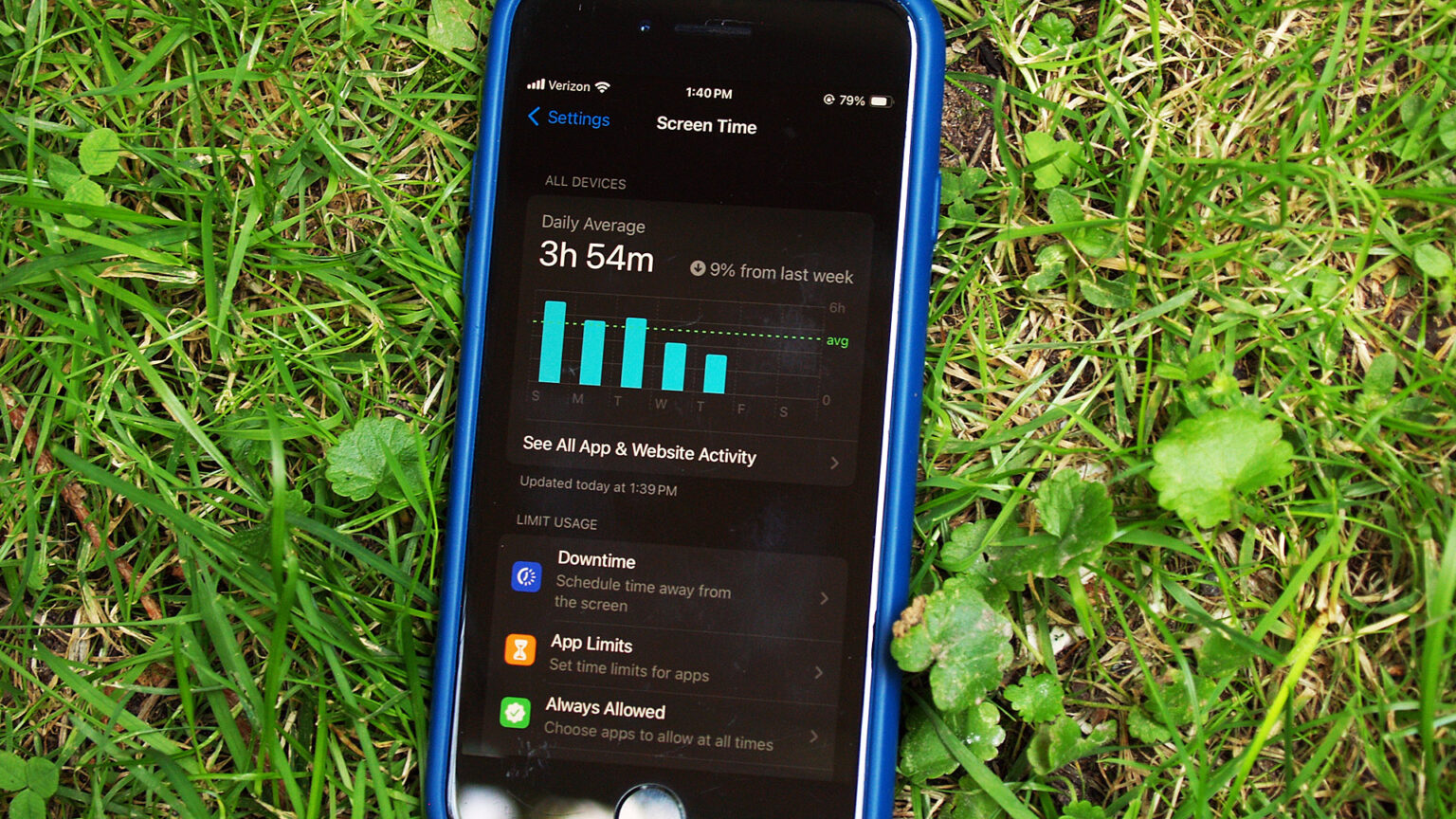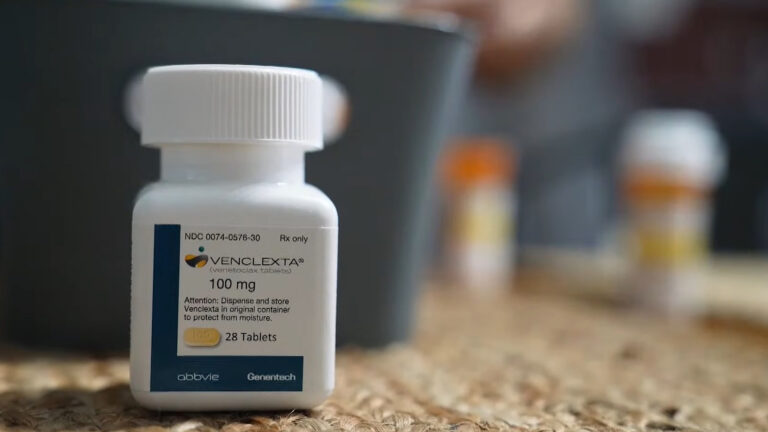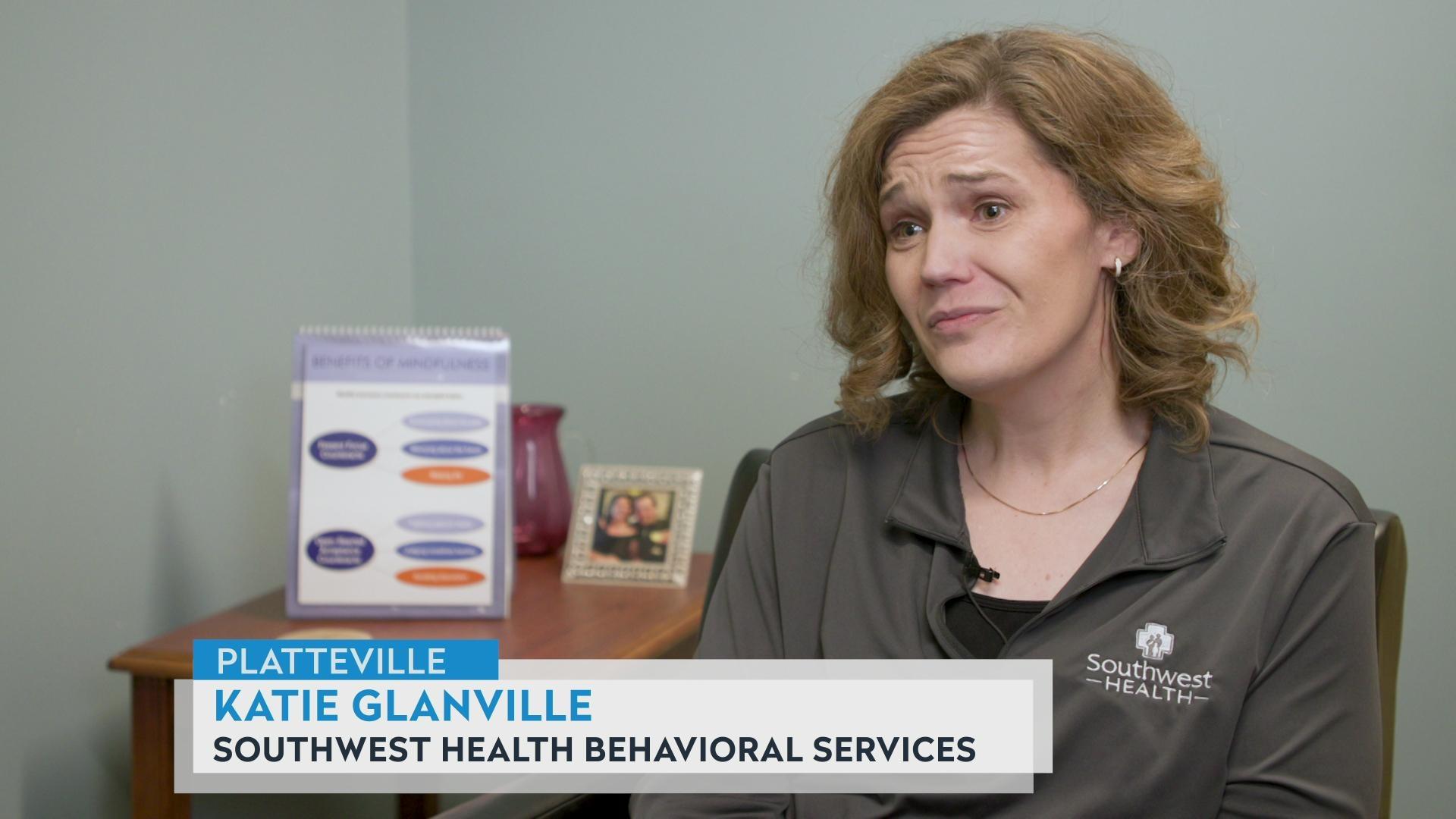Counselors tackle the growing issue of kids who are struggling with screen addiction
Children are spending an increasing amount of time viewing their phones and other screens, and the impact on their mental health is leading therapists to focus more of their efforts on addressing the issue.
By Murv Seymour | Here & Now
July 11, 2024

A smartphone shows metrics on its screen time app on July 11, 2024. Issues related to children spending more time looking at screens on phones and other devices is a growing area of focus among mental health therapists. (Credit: Jane McCauley / PBS Wisconsin)
Soft-spoken 15-year-old KJ, a pseudonym, attends therapy sessions at New Beginnings Counseling Center to help take control of a growing problem among teenagers his age and younger kids: screen addiction.
“It’s definitely an emerging problem. I think it got worse during COVID,” said Frederick Harris, owner and executive clinical director of the mental health treatment center in Madison.
New Beginnings specializes in helping marginalized communities of adults and adolescents with counseling on issues related to mental health, race, gender identity, sexual identity and other stresses.
According to the World Health Organization, which works to coordinate public health, KJ was one of 1.5 billion children worldwide who started spending more time in front of their screens texting, socializing on social media, playing video games, and watching TV during the COVID-19 pandemic. But the heavier use of screens by teens was just getting started.
Common Sense Media conducts extensive research to provide entertainment and technology recommendations for families and schools. Between 2019 and 2021, the group estimated screen time use for kids between 8 and 18 went up by nearly 20%.
Harris said screens became a safe way for kids to hide and not be seen during the pandemic. He added that it’s also fueled more bullying.
“They escape into games and meeting people online that are safe for them. They don’t have to deal with reality,” said Harris. “The cell phone is a sense of fitting in now — the bullying and the dating, the being in the know. And it’s really hard for them to function without it.”
Harris said it is hard for parents to monitor and manage their kids’ screen time use.
When KJ returned to in-person classes, he said his cell phone gave him a sense of belonging, but it also began to lead him toward more trouble at school and challenges in controlling his anger.
“It’s like the phone was always trying to get me in trouble. I was like, addicted, because I liked having a bunch of people to talk to, because then it kind of made me feel like I was actually someone,” he said.
Like many teens his age, KJ became consumed by watching TikTok, YouTube, and sometimes Snapchat videos. He especially enjoys watching videos on barbering. On weekends and school nights, KJ said it became normal to be up past midnight surfing social media sites and interacting with others in their online communities.
While teens can find a sense of community in the palm of their hand, they can also quickly go overboard and neglect essential responsibilities.
“It made me late — all time. And then sometimes when I went to school, my eyes were red and everyone was thinking I was on stuff. I was like, all right, I need to fix this,” KJ said.
According to a 2010 study by the Kaiser Family Foundation, most teens KJ’s age spend about nine hours per day viewing some entertainment on their screens, including nearly five hours on television alone.
KJ said his addiction to his phone led to online arguments and, at times, in-person fights at school – one time with his best friend. He found himself being manipulated and taken advantage of online. He started isolating himself from friends at school; during the winter months, he admits to hunkering down in his room close to his phone. One incident forced his parents to take away his phone for nearly half a year.
The Kaiser Family Foundation surveyed over 2,000 kids between the ages of 8 and 18 on their media consumption: television, computer, cell phone, and video games. Its researchers estimated that over the course of a year, children in this age range will spend 114 total days watching a screen for fun. The estimate does not include their screen time at school for educational purposes and homework. A 2001 study published by the American Academy of Pediatrics estimated that by the time the average person reaches age 70, they will have spent the equivalent of seven to 10 years watching television.
Harris said his younger clients know not to bring their cell phones to therapy sessions, even though some can struggle to function without them. The therapist knew the lives of his adolescent patients were at risk when a New Beginnings clinician asked a suicidal teen to put together a safety plan that included the names of three people to contact if he ever wanted to harm himself. Harris and his staff were shocked when one of the names listed was “Banana.” The teen had listed a username used by another gamer.
“Not the siblings in the house. Not the parents. It was three people that they connected with, and they’re best friends from a video game that his parents said they would spend nine hours on a day,” Harris said.
The Menominee Tribe of Wisconsin and the Spirit Lake Tribe in North Dakota in April 2024 filed a 161-page lawsuit against the tech companies that own Facebook, Instagram, TikTok, Snapchat, Google, and YouTube. The case was filed in the Superior Court of Los Angeles by the law firm of Robins Kaplan on behalf of both tribal governments.
The lawsuit argues social media companies purposefully created addictive platforms for children and failed to create adequate parental controls or age-verification processes.
“Enough is enough. Endless scrolling is rewiring our teenagers’ brains,” said Menominee Tribal Chairwoman Gena Kakkak in the lawsuit. “We are demanding these social media corporations take responsibility for intentionally creating dangerous features that ramp up the compulsive use of social media by the youth on our Reservation.”
Tribal leaders believe the social media sites named in the lawsuit are driving a rise in suicides among adolescent Native Americans, which the lawsuit states is the highest of any racial/ethnic group in Wisconsin.
Harris said he worries about his young Black clients potentially harming themselves because of stress and fallout from excessive screen time use.
“Kids of color are definitely using it in a different way that’s more harmful to them. It’s very harmful because they’re learning things on TikTok about what it is to be Black,” he said.
For now, screen addiction is not in the Diagnostic and Statistical Manual of Mental Disorders, Fifth Edition, called DSM-5, which is the standard reference book about mental disorders used by mental health professionals in the United States. The nearly 1,000-page manual details over 300 mental illnesses. It’s updated every five to seven years, with the most recent revision in 2022.
Harris believes screen addiction will eventually make its way into the pages of the DSM-5.
“An addiction is defined as anything that alters a person’s functioning,” said Harris. “If you can’t go to school because you’re on the phone and you get anxiety and your grades are bad, that means your level of functioning environment is low. If you can’t be at home with your family because you’re so anxious about being on it, that is your level of functioning.”
Harris said parents need to do more to educate their kids about healthy amounts of screen time and ensure they stay aware of alternate realities consumed on their screens. The CDC recommends that all children get at least 60 minutes of physical activity daily — Harris encourages young people to walk a dog, dance, socialize, volunteer and get outside with friends.
Some parents have created rewards-based contracts centered around their kids’ use of phones, computers, TVs and video games.
KJ has such a contract with his parents, and said its terms and therapy have helped him curb excessive cell phone use. Now that he is learning to put his phone down, he is gradually finding other ways to spend his time.
“I’ve been going outside, lifting weights, shooting basketball hoops, getting back into sports this year,” he said. “I may be addicted, but I’m going to try my best to try breaking a habit.”
 Passport
Passport











Follow Us